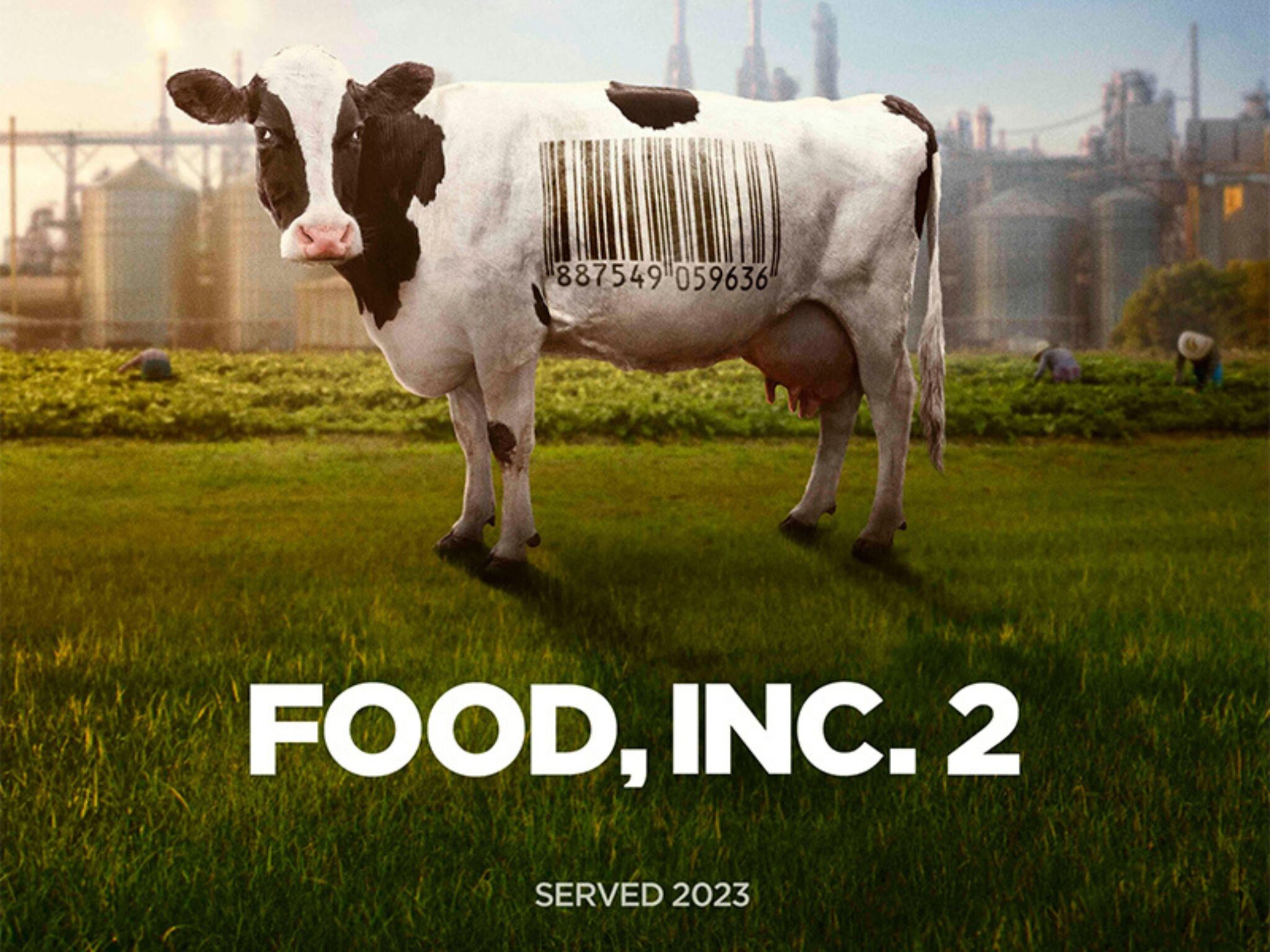Food, Inc. 2 Sheds Light on Big Food, UPFs, Modern Slavery & Cultivated Meat – But Lacks Focus
9 Mins Read
The sequel to the Oscar-nominated documentary from 2008, Food, Inc. 2 shows just how much power Big Ag wields on the food system, tackles solutions like cultivated meat and seaweed, and highlights the problem with workers’ rights and UPFs. But it feels a little muddled.
Today’s food system is a world that deals with the power of big corporations, climate change, ultra-processed foods (UPFs), animal cruelty and factory farming, fast food profits, workers’ rights and wages, consolidation and monopolies, portion sizes, plant-based foods, cultivated meat, and regenerative agriculture – Food, Inc. 2 tries to cover them all in the space of 90 minutes.
That’s what’s so good and so disappointing about the documentary directed by Robert Kenner and Melissa Robledo, which serves as a sequel to 2008’s Food, Inc. The ambition is laudable, but the execution doesn’t always stick the landing.
The problem with making a genuinely great film is that it’s always incredibly tough for a sequel to scale the same heights. And that’s what it feels like with Food, Inc. 2, which doesn’t quite hit you the same way as its predecessor, one of the most influential documentaries of this century.
Kenner’s first film changed the way most of us looked at food and our eating habits, and the second film attempts to build on that, attempting to pull the curtain on the modern food system and reinforcing the deep-rooted complexities and challenges facing the future of food.
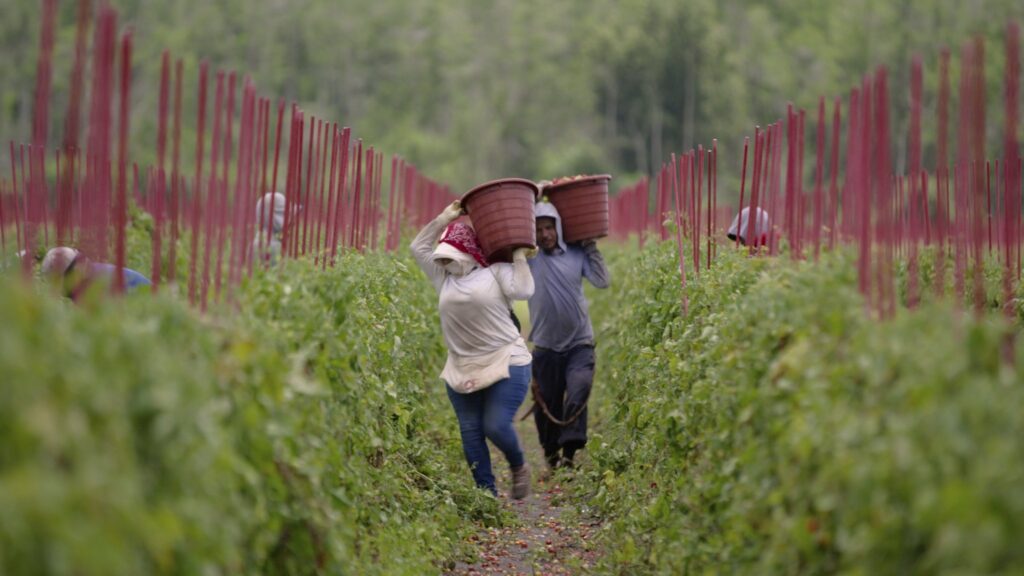
Uncovering the root of the issues
Food, Inc. 2 sees the return of figures like journalists Michael Pollan (In Defense of Food, Cooked) and Eric Schlosser (Fast Food Nation), who essentially serve as the protagonists guiding the viewer through the film. Pollan (correctly) notes that the first film created a food movement, but adds: “We thought we could change the food system one bite at a time, but as important as that is, it’s not enough – there’s more that we have to do.”
The film takes you to different parts of the US to spotlight various issues in the food system. In Thimble Islands, Connecticut, a former fisherman talks about how they’re “too good at what we did” – likening it to industrial pig farming out in the ocean – and tells us he’s moved to the much more planet-friendly kelp farming. In Immokalee, Florida, immigrant farm workers are lied to by recruiters, explaining how they’re treated as disposable despite their essential work in feeding the country.
In Winnebago County, Iowa, commodity crops like corn and soy have taken over the variety previously grown because of government subsidies – intensive farming here has destroyed half of the topsoil. Smallholder dairy farmers in Columbia County, Wisconsin (which has lost half of its dairy farms since 2007), are lamenting the low prices they’re paid for the milk, with corporate control making many family farms give up.
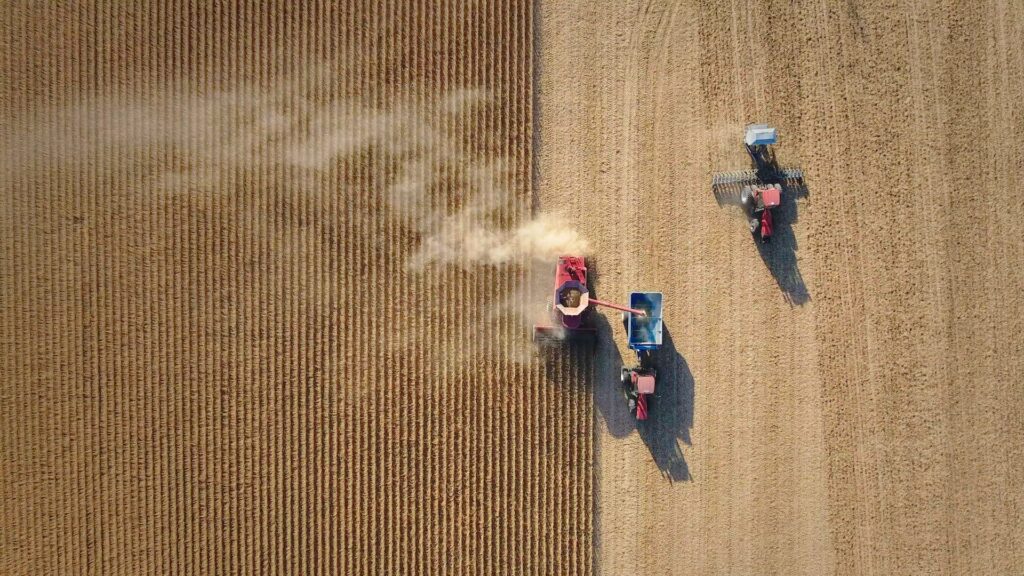
In Kansas City, a Taco Bell employee illustrates how low wages make it near-impossible to survive, as the cost of living goes up. “How can I feed all these people, but my son’s stomach is growling?” she says in one of the documentary’s standout segments, which ends with the realisation that taxpayers are supporting these food giants, but the companies aren’t backing their workers. The average employee at Yum! Brands – the restaurant empire that owns Taco Bell, Pizza Hut and KFC – is $13,082 per year. The CEO earns $13,259 per hour.
Another damning scene is set in Waterloo, Iowa, where workers at a Tyson Foods meatpacking plant contracted Covid-19, which infamously had refused to close its factories during lockdown. The film suggests that 1,300 out of 2,500 workers tested positive, and the number of deaths increased exponentially in the community. This was inevitable, considering that at the time, there was no policy for contact tracing or no mandatory use of masks – workers were allegedly throwing up on the floor and simply going back to work.
The perils of monopolies and dealing with UPFs
Food, Inc. 2 addresses the dangers of monopolies and importance of antitrust policies, noting how the poorest farmers in the US are responsible for the healthiest food we can eat, but that the market share for National Beef, JBS, Cargill and Tyson has gone up from 25% to a mind-bending 85%. It cites the example of AT&T’s breakup in the 1980s, which made long-distance calls cheaper and opened the gates for the internet economy.
“Breaking up economies is directly linked to creating innovation,” says Schlosser. A prime example of the drawbacks of a monopolistic market is Abbott Nutrition, which owns 80% of the baby formula market alongside Meat Johnson Nutrition. But when there were safety issues with its products, Abbott recalled its formula and shut its largest plant, sparking an infant formula shortage.
However, if prices are low, it doesn’t matter how much control one company has over a market – this becomes a matter of government policy. And the film deals with plenty of that too, bringing in political figures like Cory Booker and Jon Tester. Booker is filmed speaking to farmers about the “savagely broken” food system, showcasing his efforts around health and nutrition policies.
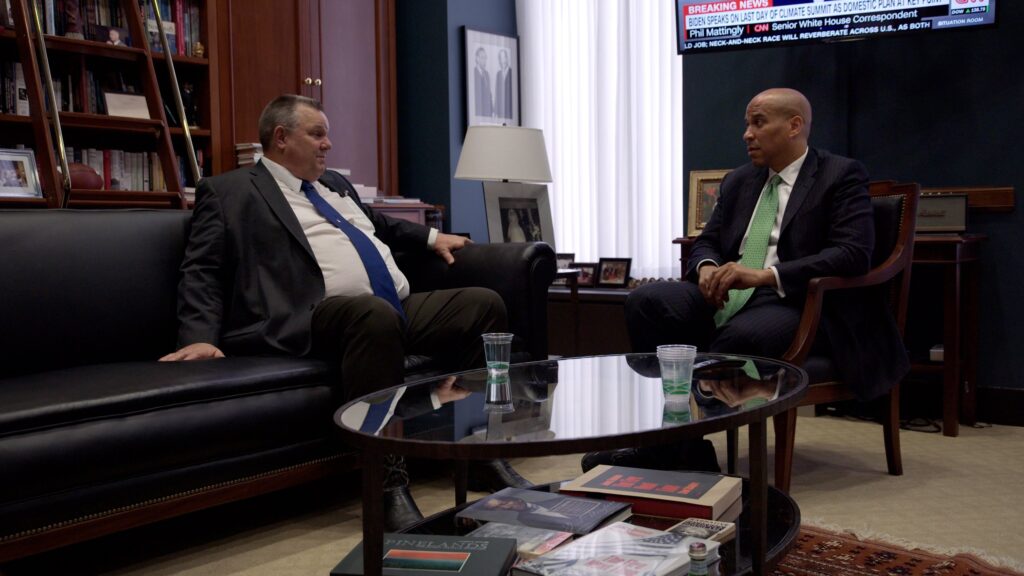
“I don’t want the government to be telling someone what to eat, but I sure as heck don’t want my tax dollars subsiding the things that are making people sick, and now we have to pay for the healthcare costs of the chronic disease that we’re feeling with our food system,” he says.
Speaking of health, Food, Inc. 2 interviews Carlos Monteiro, the Brazilian researcher behind the Nova classification of food processing. He highlights how despite the high prevalence of obesity in Brazil, purchases of salt, cooking oil and table sugar were down. But the population was replacing whole foods like rice and beans with soft drinks, sausages and snacks – all UPFs.
The film looks at a study linking UPFs to around 500 more calories than minimally processed foods. It further addresses portion sizes, a major driver of food waste and ill health, with nutritionist Marion Nestle noting how fast-food chains proliferated and made portions bigger. “If you’re presented with a very large amount of food, all of the research shows that you’re gonna eat more from that portion than you would if you were given a small portion,” she says. “It’s very hard to resist a good environment that is just yelling at us all the time: ‘Eat more, eat more, eat more.'”
But while Food, Inc. 2 argues that UPFs cause people to overeat, it never really explains why that’s the case. And that’s a theme running throughout the film, just as there appears to be a big revelation or statement incoming, it deflects onto another topic.
A game-changing study ignored by PepsiCo
Perhaps the most striking part of Kenner and Robledo’s film concerns a study by Yale professor Dana Small, who was conducting research into the brain and metabolic responses to sugars and calories. PepsiCo was interested in the research and commissioned her to find ways to drop the sugar content in beverages without any compromise in taste and satisfaction.
Contrary to Small’s expectations, she found that drinks have the most satisfactory consumer response when calories and sweetness levels are matched. It had potentially huge implications for beverage giants, with a reduction in sugar possible without affecting the customer. However, PepsiCo pulled the funding after hearing the results – the problem, it seems, was that it believed the research.
This echoed a larger point Pollan was making: “The reason you process food is not that there’s anything wrong with it in its natural state, it’s that you make a lot more money.”
The documentary spends a few minutes on soil health, regenerative agriculture and organic farming too. Tester, a senator and third-generation farmer from Montana, explains how snow has destroyed harvests in the state, and he has since moved to organic farming. He believes corporate America is killing rural America and destroying family farms – and that might be part of his motivation to ban cultivated meat in school meals.
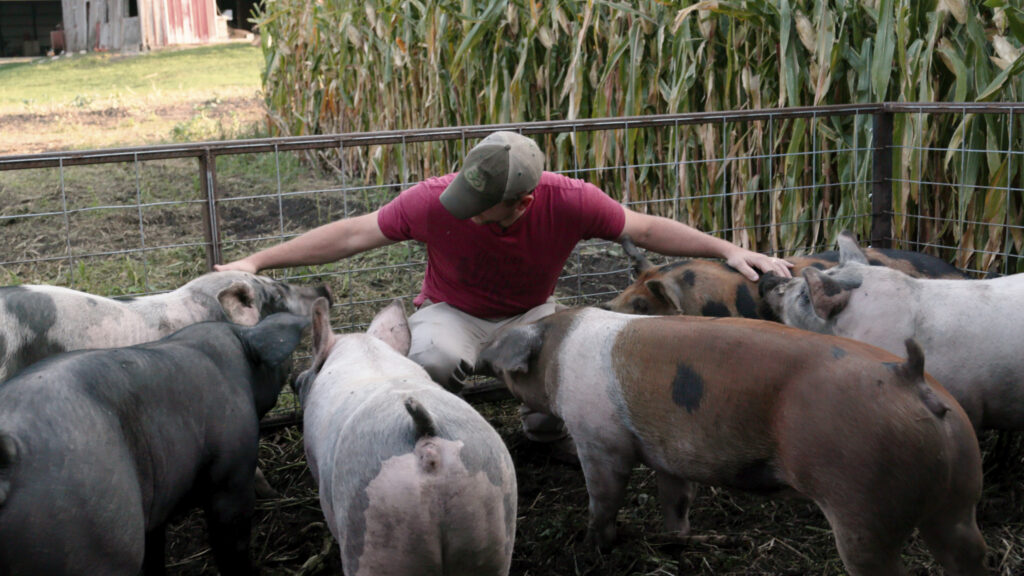
This is the same man who called cultivated meat “a fake substitute that’s grown in a lab” and wants schools to “serve real meat from our ranchers”. “Montana ranchers grow the best meat in the world, that’s a fact – and our students ought to be getting the best in their school breakfasts and lunches every day,” he notes.
The focus on smallholder farming is, of course, vital, but it also reflects one of the film’s flaws. We hear from cattle ranchers who accuse Big Food of stealing their profits, but they’re standing in a barn where cows are held in confined spaces. Pollan believes there’s a place for sustainably farmed animals, though the documentary never illustrates how. It’s also a more complex argument: while there are things the livestock sector can do to reduce its climate footprint, none have been proven on a scale large enough to meet our climate goals.
Not a great look for cultivated meat
Food, Inc. 2 also spends very little time on one of the most glaring solutions. Even the UN has endorsed the potential of alternative proteins like plant-based foods and cultivated meat for a brighter planetary future and better human health, but Pollan questions the health credentials of vegan products because many of them are UPFs, perpetuating a common misconception about the NOVA classification.
He visits the facilities of Upside Foods, one of only two companies to be cleared to sell cultivated meat in the US, tasting its chicken and noting that it fooled him. But he shifted that rhetoric by explaining the meat came not from the bioreactors viewers are shown, but a different, much smaller-scale machine. It punctuated the tech’s scalability and cost issues – Upside Foods founder and CEO Uma Valeti predicts that these novel proteins would need about five to 10 years to reach price parity with conventional meat.
It’s not a good look for the cultivated meat industry, with the twist about the chicken not coming from the bioreactors almost painted as a lie. It compounds the optics issue for cultivated meat, which is already battling political challenges and bans from US states and EU nations.
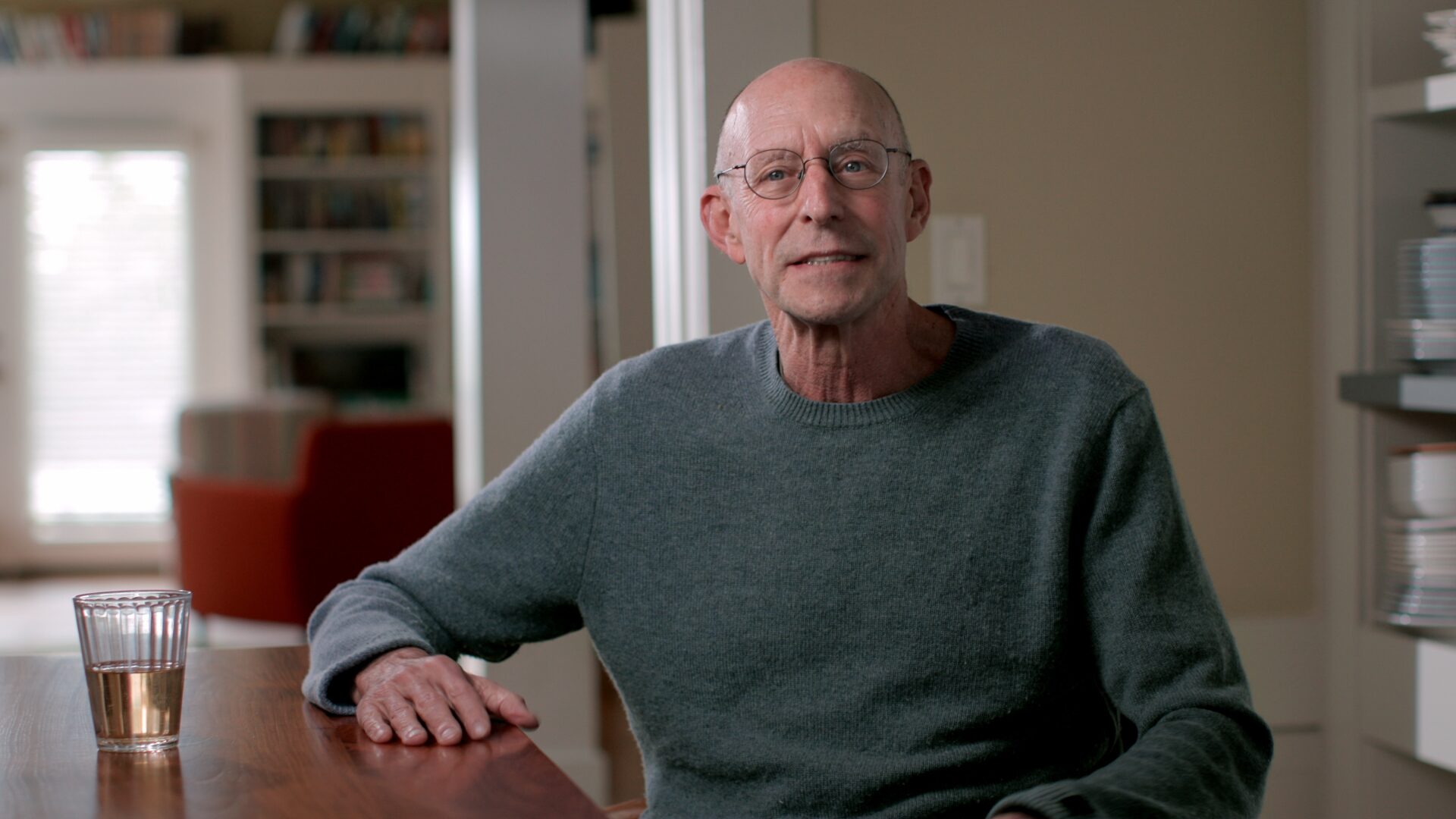
The documentary also spotlights Impossible Foods, where founder Pat Brown shows Pollan around its plant-based meat facility. There’s an awkward scene when they discuss where methylcellulose is sourced from, again touching upon the UPF aspect of meat analogues. But Brown outlines why such technologies are important in a world that eats too much meat: “You’re not going to solve the problem by trying to persuade people to change their diets – that’s never worked. You just have to realise that people are not going to stop wanting meat, we’re just making it the wrong way.”
Food, Inc. 2 ends with multiple calls to action, asking the powerholders to pay and protect our workers better, subsidise healthy foods and sustainable farms instead of UPFs, abolish factory farms, and end cruelty to animals and the planet. “Monopoly power is a threat to our freedom,” it concludes.
All these themes are crucial, but packing them in such a short amount of time makes the documentary disjointed – as a viewer, it can be hard to keep up and you might end up feeling overwhelmed, not empowered. But really, if you’re part of the food industry, or even if you’re just in the loop of things, Food, Inc. 2 isn’t telling you much you didn’t know. For the uninitiated, though, it can be an eye-opener – much like its predecessor.


